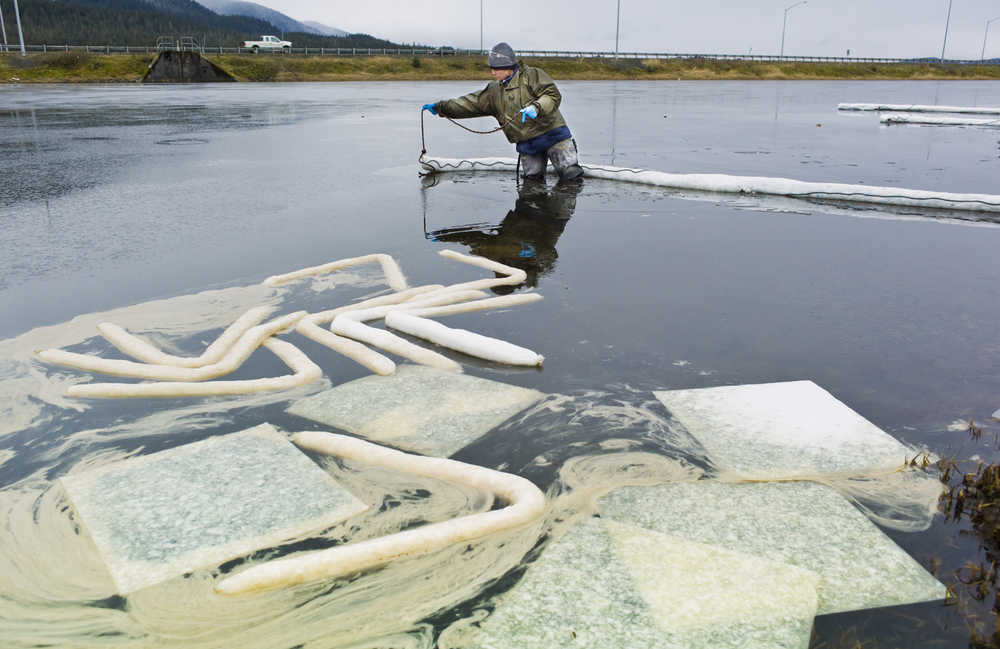Just off the Twin Lakes trail, a yellow snake-like boom — similar to those that float around the perimeter of most oil spills — surrounds a culvert emptying into the lake. The smell of diesel and shiny film floating on top of the water contained within in the boom explain its presence. There was a fuel spill.
“It smells like diesel,” a woman said as she walked her dog past the polluted water. “It must’ve come from one of the houses up there.” She nodded toward the neighborhood above Twin Lakes.
A single sign left by the Alaska Department of Environmental Conservation confirmed her suspicion.
“NOTICE! Diesel fuel was discharged into Twin Lakes recreation area on or about February 3, 2016,” the sign reads.
Allison Natcher, an environmental program specialist with the DEC, was at the scene of the spill Wednesday and said that the diesel came from a home-unit oil tank above the lake. She couldn’t say which house the diesel came from because the DEC is still investigating the spill. She was also unable to say what caused the leak. But she did confirm that “there’s no more pollution coming out of the original source.”
The DEC is partnering with Nortech, an environmental and engineering consulting firm, to clean the diesel floating on top of the lake.
“It’s going to be work for both of us to clean,” Natcher said. ““We’re working hand in hand with the environmental consultants.”
Natcher said she is unsure at this time how long it will take to clean the spill or how much diesel is in the lake. “Sometime that it takes a while to actually quantify it,” she said.
Two Nortech workers were at the lake in the late afternoon putting absorbent booms in the water to soak up the diesel. They directed the Empire to their supervisors at Nortech for comment. The firm didn’t respond by press time.
State law requires any spill that enters water to be reported. Natcher said that this should serve as a reminder to homeowners to check the condition of their fuel tanks and fuel lines.

